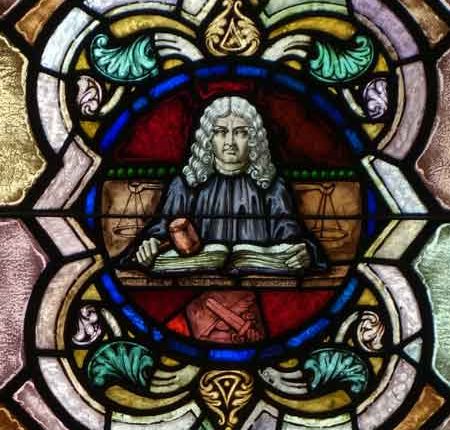
This Fall, Jessica Goldberg, Associate Professor of History, is teaching History 221A: Law and Medieval History on Fridays, from 2:00-4:50pm in Bunche Hall 2156. Students from outside history are welcome–outside perspectives on legal material always make a class like this richer and more rewarding. The professor’s permission is need to enroll.
Each week will involve looking at different kinds of sources that contain medieval legal material (mostly, but not entirely, legal sources) and reading a book that makes inventive use of the type of source. Most of the secondary reading is in English, and the primary sources are a mix of English translations and Latin. There are also options to read materials in other languages.
This course is appropriate for students in the post-baccalaureate program or students needing a course in which they read post-classical Latin, in addition to those who might be interested in using legal material in their work or having more background in European legal history.
Here is the preliminary syllabus of sessions. Starred materials are options for student presentations; the schedule is preliminary as the professor may change a few topics (as well as adding a couple) depending on who the students are.
September 29: What is Law in History? Where is Law in History?
Catherine L. Fisk and Robert W. Gordon, “‘Law As…’: Theory and Method in Legal History,” UC Irvine Law Review (2011), 519–41
Steven Wilf, “Law/Text/Past,” UC Irvine Law Review 1 (2011), 543–64
Robert W. Gordon, “Critical Legal Histories,” Stanford Law Review 36 (1984), 57–125
Emily Kadens, “Custom’s Two Bodies,” in Center and Periphery: Studies on Power in the Medieval World in Honor of William Chester Jordan, ed. Katherine L. Jansen, G. Geltner, and Anne E. Lester (Leiden: Brill, 2013), 239–48.
Susan Reynolds, “Medieval Law,” in The Medieval World, ed. Peter Linehan and Janet L. Nelson (London, 2001), 485–502
Thomas Kuehn, “Conflict Resolution and Legal Systems,” in A Companion to the Medieval World, ed. Carol Lansing and Edward D. English (Oxford, 2009), 335–53.
2. October 6: Law from Lawbooks
Patrick Wormald, The Making of English Law: King Alfred to the Twelfth Century, vol. 1, Legislation and Its Limits (Oxford, 1999)
The Laws of the Earliest English Kings, ed. and trans. F. L. Attenborough (Cambridge, 1922). Read Æthelberht, one of the other codes, and as much of the rest as you like.
Leges Edwardi Confessoris (ed. O’Brien) (distributed)
3. October 13: Law from Court Cases (Ecclesiastical)
Sara MacDougall, Bigamy and Christian Identity in Late Medieval Champagne (Philadelphia, 2012)
Select Cases from the Ecclesiastical Courts of the Province of Canterbury c. 1200–1301, ed. Norma Adams and Charles Donahue, Jr., Selden Society 95 (London, 1981), 37–72, 81–84, 96–137 (C.1–6)
*Charles Donahue, Jr., Law, Marriage, and Society in the Later Middle Ages (Cambridge, 2007)
*Liber extra sive Decretales Gregorii Noni
4. October 20: Law from Court Cases (Secular)
Daniel Lord Smail, The Consumption of Justice: Emotions, Publicity and Legal Culture in Marseille, 1264–1423 (Ithaca, 2003)
Select Cases in Manorial Courts: Property Law and Family Law, 1250–1500, ed. L. Bonfield and L. R. Poos, Publications of the Selden Society 114 (London, 1998), sel.
*I Placiti del ‘Regnum Italiae’, ed. Cesare Manaresi, 3 vols in 5, Fonti per la storia d’Italia 92, 96–97 (Rome, 1955–60)
*Robert C. Palmer, The Whilton Dispute, 1264–1380: A Socio-Legal Study of Dispute Settlement in Medieval England (Princeton, 1984)
5. October 27: Law from Documents of Practice
Paul Freedman, The Origins of Peasant Servitude in Medieval Catalonia (Cambridge, 1991)
Un formulario notarile pisano del primo Trecento, ed. Silio P. P. Scalfati, Biblioteca del Bollettino storico pisano, Fonti 10 (Pisa, 2003)
*Assegurances i canvis marítims medievals a Barcelona, ed. Arcadi Garcia i Sanz and Maria-Teresa Ferrer i Mallol, Institut d’estudis catalans, Treballs de la Secció de filosofia i ciències socials 6 (Barcelona, 1983)
*Emily Zack Tabuteau, Transfers of Property in Eleventh-Century Norman Law (Chapel Hill, 1988)
6. November 3: Law as Speech, Law as Object
Robin Chapman Stacey, Dark Speech: The Performance of Law in Early Ireland (Philadelphia, 2007)
Els pergamins de l’arxiu comtal de Barcelona de Ramon Borrell a Ramon Berenguer I, ed. Gaspar Feliu et al., 3 vols., Col.lecció diplomataris 18–20 (Barcelona, 1999), sel. (oath texts)
*Domesday Book
*Brigitte Bedos-Rezak, When Ego Was Imago: Signs of Identity in the Middle Ages (Leiden, 2011)
7. November 10: Law as Writing
Simon Teuscher, Lord’s Rights and Peasant Stories: Writing and the Formation of Tradition in the Later Middle Ages, trans. Philip Grace (Philadelphia, 2012) [Erzähltes Recht: Lokale Herrschaft, Verschriftlichung und Traditionsbildung im Spätmittelalter (Frankfurt, 2007)]
Coutumiers de Normandie: Textes critiques, vol. 1, Trés ancien coutumier de Normandie: Texte latin, ed. Ernest Joseph Tardif (Rouen, 1881), sel.
*Bracton, De legibus et consuetudinibus Angliae
*Talya Fishman, Becoming the People of the Talmud: Oral Torah as Written Tradition in Medieval Jewish Cultures
8. November 17: Nordic Stuff
William Ian Miller, Bloodtaking and Peacemaking: Feud, Law, and Society in Saga Iceland (Chicago, 1990)
The Saga of Hrafn Sveinbjarnarson
*The Earliest Norwegian Laws, being the Gulathing Law and the Frostathing Law, trans. Laurence M. Larson (New York, 1935)
*William Ian Miller, Audun and the Polar Bear: Luck, Law, and Largesse in a Medieval Tale of Risky Business (Leiden, 2008)

